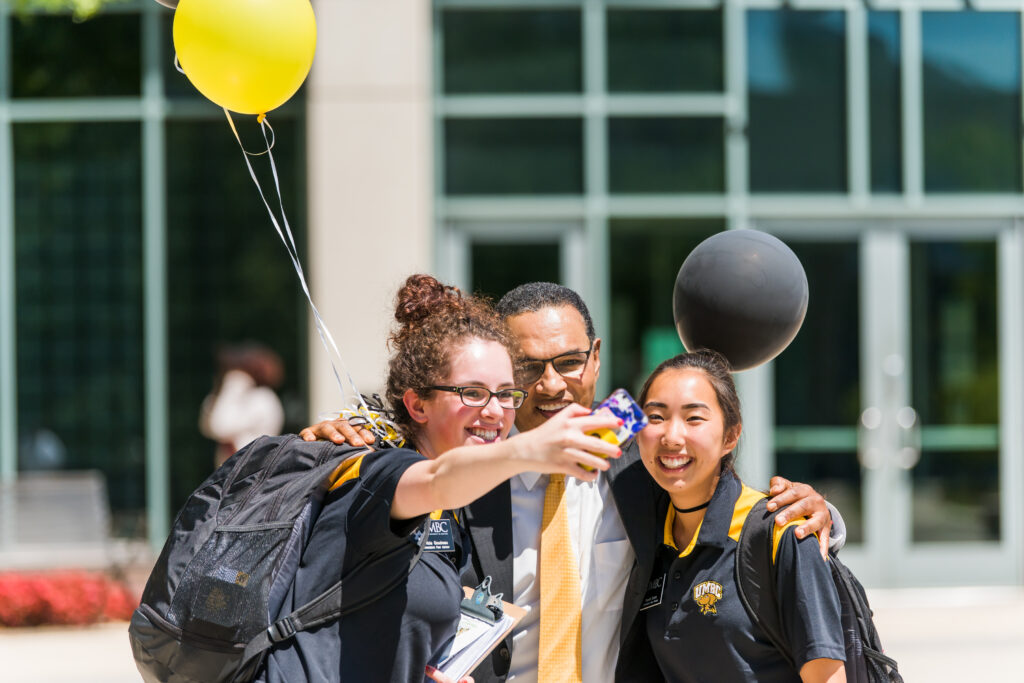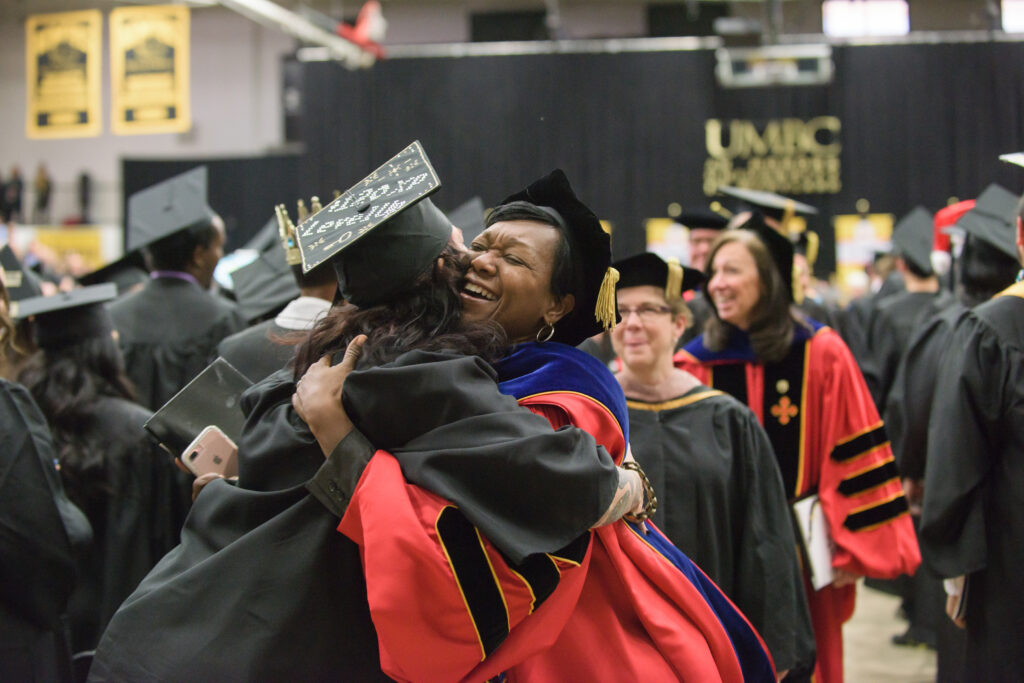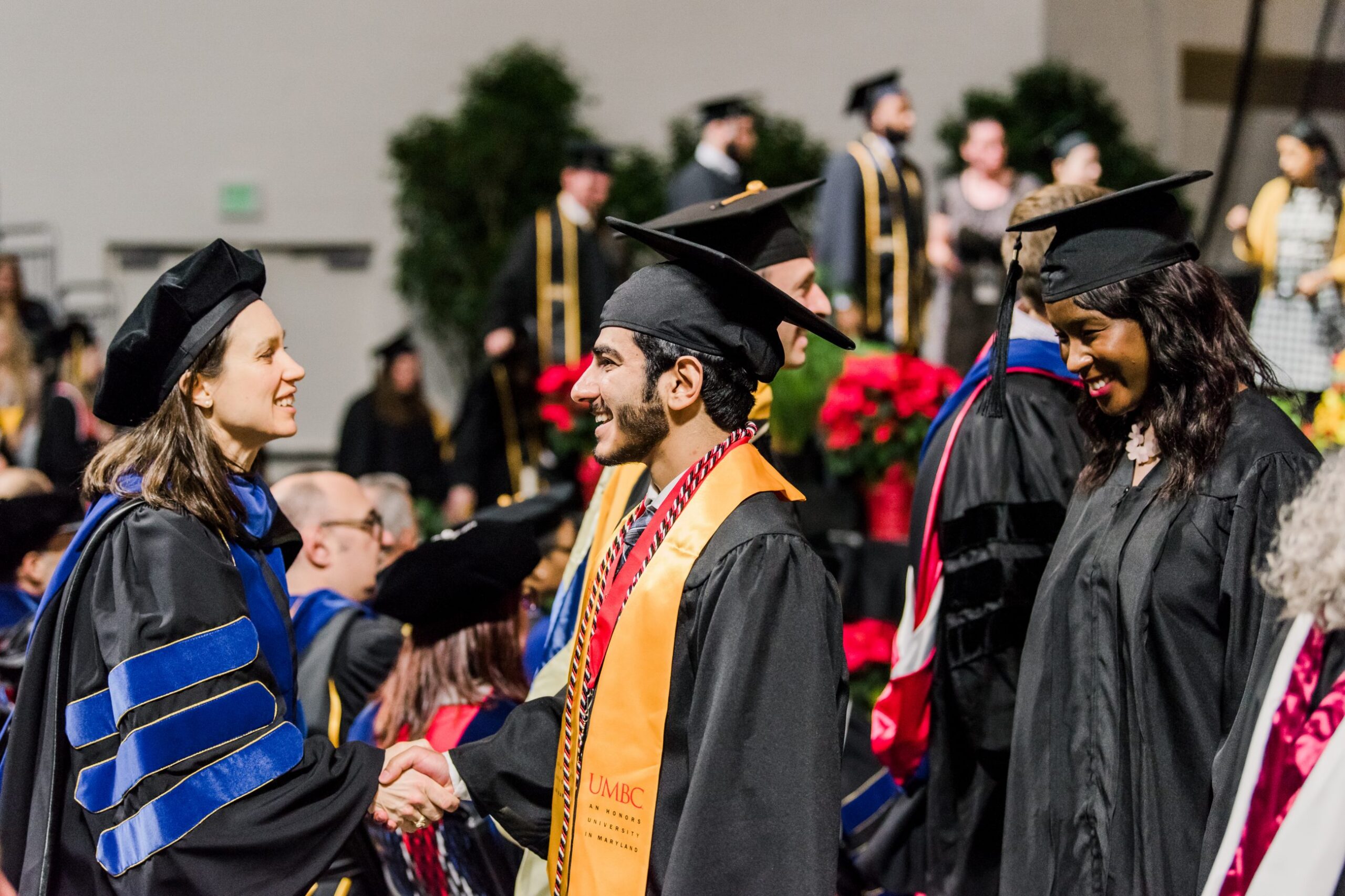This week, Times Higher Education shined a spotlight on UMBC’s advancements in graduating more low-income and minority students in the sciences—what it calls the “holy grail of academia.” “Everybody wants to understand our model,” UMBC President Freeman Hrabowski told reporter Paul Basken.
As Hrabowski explained, lessons learned in one area can inform another, and UMBC’s work to support underrepresented students in STEM fields has led to investments in support programs for students of all backgrounds across UMBC.
“The words I use are ‘inclusive excellence’,” Hrabowski told the London-based publication. “Yes, we are helping kids of color, but we are helping all kids.”

The article travels across UMBC’s growing campus. Basken takes a stop in the Chemistry Discovery Center, speaking with Diana Hamilton, Ph.D., ’93, lecturer in chemistry and biochemistry, about effective, team-based approaches to active learning. He also speaks with Yvette Mozie-Ross ’88, vice provost for enrollment management, about UMBC’s strategic use of analytics to determine where students are struggling and how to support students and faculty through additional resources.
“Most institutions have a data warehouse,” says Mozie-Ross. “What most institutions don’t have is an analytics tool to use that data on a daily basis, to make informed decisions” as UMBC does, she explains.

As UMBC further expands student support programs across the university, the world is also looking at efforts to replicate UMBC’s Meyerhoff Scholars Program at other institutions, Times Higher Education notes. The Meyerhoff Scholars Program is known as the gold standard in supporting diverse students in STEM fields. UMBC is now the nation’s #1 producer of African American undergraduates who go on to complete M.D./Ph.D. degrees, and #2 nationally for African American undergraduates who complete a Ph.D. in any STEM field.
In 2014, the Howard Hughes Medical Institute made a five-year, $8 million investment in adapting the Meyerhoff program at both Penn State and the University of North Carolina at Chapel Hill. Those efforts are showing strong results, and have sparked interest from other universities across the nation.
Featured image: Associate Professor Laura Hussey congratulates new UMBC graduates during winter commencement, December 2018. All photos by Marlayna Demond ’11 for UMBC.

